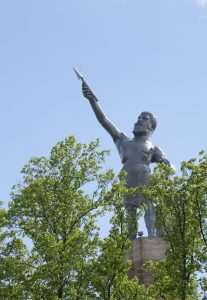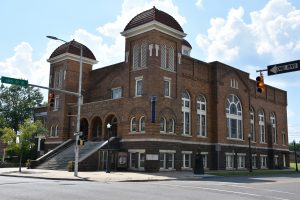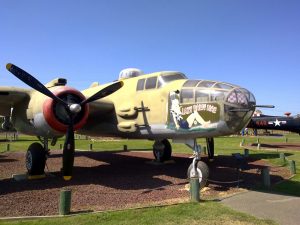
Birmingham Crossplex – Historical Attractions
The Birmingham Crossplex is about five miles from the heart of Birmingham, Alabama. Birmingham used to be an industrial center that dominated the steel industry. It then went on to play an important role in the civil rights movement. That’s why modern-day Birmingham is brimming with rich cultural and historical significance.
When you visit the Birmingham Crossplex, you will be near many of the most significant historical sights in the city. It’s worth going to see these attractions to learn more about the history and culture of Birmingham. Here are some of the major historical spots to visit on your next trip.
Sloss Furnaces National Historic Landmark
In the 19th century, Sloss Furnaces was the largest manufacturer of pig iron, otherwise known as crude iron. This company ceased operations in 1970, but the building still stands in the condition it did centuries ago. Now the Sloss Furnaces National Historic Landmark, visitors can come and tour the longest continually running blast furnace in Birmingham, Alabama. It is a 19-minute drive from the Birmingham Crossplex.
This is a great way to see where Birmingham’s industrial heritage began. If you are visiting with a group or on your own, guided and self-guided tours are both free. These tours do not require reservations. Guided tours take place on almost every Saturday and Sunday around 1 p.m. and last roughly an hour. Self-guided tours also last about an hour. There is also an educational film shown in the Visitor Center. Keep in mind that both tours take place outdoors, so be sure to wear appropriate clothing.
Vulcan Park and Museum

The statue was originally designed by the Italian artist Giuseppe Moretti. It was restored in 1999. Along with the restoration of the statue, the surrounding park was rehabilitated and expanded. A museum was also added. The 20-minute drive from the Birmingham Crossplex is well worth it to see this impressive work of civic art.
Purchasing a ticket to Vulcan Park and Museum will give you access to the park grounds, observation tower, and museum. The observation tower offers stunning views of the city. The museum details Birmingham’s industrial history and gives more insight into the creation and preservation of the Vulcan statue.
Tickets for adults are $6, senior tickets are $5, and tickets for children ages five to 12 are $4. If you are a AAA member, you can receive a 20% discount on two tickets.
Iron & Steel Museum of Alabama
If you want to know more about Alabama’s iron industry, drive a half hour from the Birmingham Crossplex to the Iron & Steel Museum of Alabama. This 13,00-square-foot museum features exhibits that details on 19th-century iron making. Tickets are only $2 per person.
Roupes Valley Ironworks at Tannehill is the main focus of much of the museum, but it also covers how iron was produced in general during the Civil War. Ironwork was a staple in Alabama. There were 13 iron companies and six rolling mills that helped arm the Confederacy, making up 70% of the iron arsenal supply. In addition to the exhibits, there is a theater and gift shop.
When you finish exploring the museum, go visit the May Plantation Cotton Gin House to view more industrial artifacts. This building dates back to 1858. You can also head to the Tannehill Ironworks Historical State Park, which is a wonderful place to spend an hour or two on a sunny day. Admission to the park is $5 for adults, $4 for seniors, and $3 for children.
Arlington Antebellum Home & Gardens
Once a plantation house, the six-acre Arlington Antebellum Home & Gardens is on the National Register of Historic Places. Today it is a venue for historical, cultural, and civic activities. It’s also a place to go to enjoy a day outside with gorgeous gardens. This attraction is an easy, eight-minute drive from the Birmingham Crossplex.
Visitors can check out all the rooms in the house and walk through the gardens. Both guided and self-guided tours are available. Self-guided tours are made even more informative with educational materials you can find in the gift shop, such as a brochure that details the significance of each room in the home.
Whichever tour option you choose, keep in mind that the hours of operation are 10 a.m. to 4 p.m. on Tuesday through Saturday. Adult tickets are $5 and tickets for children ages six to 18 are $3.
16th Street Baptist Church

Due to segregation, the church often functioned as a meeting place, social center, and lecture hall for Birmingham’s African American citizens. With its central location and special programs, 16th Street Baptist Church welcomed African Americans from many neighboring towns and cities. As the civil rights movement grew, this church became a headquarters for meetings and rallies.
While there was a great deal of inspirational leadership, marches, and community-building that came out of this congregation, tragedy struck the church on September 15, 1963. On that day, the church was bombed. This disaster injured more than 20 members and killed four young girls: Addie Mae Collins, Cynthia Wesley, Denise McNair, and Carole Robertson.
This devastation brought outpourings of sympathy with donations from all over the world. For instance, the people of Wales gifted the church a large stained glass window designed by John Petts, a Welsh artist who was well-known for his engraving and stained glass artwork.
To learn more about the church’s history firsthand, take part in an hour-long tour of the building. Tours cost $5. Individuals can go on a tour as a walk-in, but group tours must be scheduled over the phone or online. You can schedule a visit for Tuesday through Friday from 10 a.m. to 3 p.m. or Saturday by appointment from 10 a.m. to 1 p.m.
Birmingham Civil Rights Institute
About a 14-minute drive from the Birmingham Crossplex and steps from the Sixteenth Street Baptist Church is the Birmingham Civil Rights Institute. This museum aims to enlighten its guests about both civil and human rights by discussing hardships and successes of the past and present through its exhibits and programs. The museum is a living memorial that creates programs and dialogue that encourage cultural awareness.
Exhibits in the museum include permanent, special, and traveling collections. Permanent exhibits include the Human Rights Gallery, Movement Gallery, Confrontation Gallery, and Barriers Gallery. Traveling exhibits have included Selma-to-Montgomery, Elder Grace, and Living in Limbo.
For a better understanding of Birmingham’s history and civil and human rights, take a self-guided tour. These tours are easy to navigate with multimedia exhibitions and presentations.
You can order tickets online or purchase them on site, but it’s worth mentioning that discounts can only be applied to tickets purchased on site. Adult tickets are $15, tickets for college students with an ID are $6, and senior tickets are $5. Admission for children is free.
Southern Museum of Flight

At this museum, you will find six intriguing exhibitions detailing civilian, military, and experimental aircraft dating back to some of the earliest histories of powered flight. The Tuskegee Airmen Exhibit honors Alabama’s famed Tuskegee Airmen, featuring numerous World War II-era planes.
In the Lake Murray B-25 Exhibit, visitors view an aircraft that was recovered from Lake Murray in South Carolina. Other collections include the Korean War Jets Exhibit, Vietnam War Helicopters Exhibit, Huff-Daland Crop Duster Exhibit, and the Outdoor Collection. Additionally, the museum is also home to the Alabama Aviation Hall of Fame, which features over 70 biographical plaques.
Admission costs $7 for adults and $6 for students and seniors. If you are an active member of the military, you and your family can come in for free.
Sadler House
The Sadler House is a restored pioneer home. As one of the oldest surviving houses of its era, dating back to the early 1800s, the West Jefferson County Historical Society preserves this land, and it is on the National Register of Historic Places. Taking a 24-minute drive from the Birmingham Crossplex to the Sadler House is like taking a time machine back to the 19th century.
Originally constructed around 1820 as a small cabin, the home doubled in size by 1830 when Isaac Wellington Sadler bought and remodeled it. Sadler was one of the people in the first major tide of settlers coming from North Carolina to Alabama. By the 1860s, the Sadlers had acquired 2,800 acres of land for their plantation.
During the Civil War, Union soldiers spared this house and decided to destroy the nearby Tannehill Furnaces instead. Today the grounds of this home are open to the public and tours can be scheduled.
